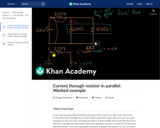
How to calculate the current through a resistor in parallel using equivalent resistance and Ohm's law.
- Subject:
- Physical Science
- Physics
- Material Type:
- Lesson
- Provider:
- Khan Academy
- Provider Set:
- Khan Academy
- Author:
- Sal Khan
- Date Added:
- 04/13/2018

How to calculate the current through a resistor in parallel using equivalent resistance and Ohm's law.
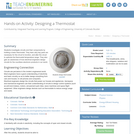
Students investigate circuits and their components by building a basic thermostat. They learn why key parts are necessary for the circuit to function, and alter the circuit to optimize the thermostat temperature range. They also gain an awareness of how electrical engineers design circuits for the countless electronic products in our world.

These four lessons are provided by Echoes and Reflections. The lessons come from a new book, "Teaching the Holocaust By Inquiry" by Beth Krasemann. The book is scheduled for release at the end of May 2022.

This is a YouTube video that brings out the main concepts in chapter 20 of the college physics text book. The chapter is on Electric Currents and Resistance.

In this video David derives the formula to find the power used by a resistor. Created by David SantoPietro.
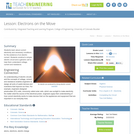
Students learn about current electricity and necessary conditions for the existence of an electric current. Students construct a simple electric circuit and a galvanic cell to help them understand voltage, current and resistance.
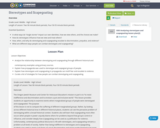
Grade Level: Middle - High SchoolLength of Lesson: Two 90 minute block periods, Four 50-55 minute block periodsEssential QuestionsIn what ways do “single stories” impact our own identities, how we view others, and the choices we make?How do stereotypes influence how we view and treat others?How, when, and why do stereotyping and scapegoating escalate to discrimination, prejudice, and violence?What are different ways people can combat stereotypes and scapegoating?

This is an exploratory activity where students in small groups discover the relationship between the force of resistance, the force of effort, and placement of the fulcrum in a first class lever.
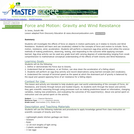
The egg-drop activity is designed to help students develop a deeper understanding of the force created by wind resistance and how it interacts with the force due to Gravity. Students will note how surface area affects the resistance of a falling object as Gravity works on it. Students will record and share observations and questions regarding the experiment.

Students are introduced to the idea of electrical energy. They learn about the relationships between charge, voltage, current and resistance. They discover that electrical energy is the form of energy that powers most of their household appliances and toys. In the associated activities, students learn how a circuit works and test materials to see if they conduct electricity. Building upon a general understanding of electrical energy, they design their own potato power experiment. In two literacy activities, students learn about the electrical power grid and blackouts.
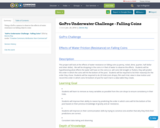
Using a GoPro camera to observe the effects of water resistance on falling objects coins

This course explores the collective historical and contemporary experiences of the African Diaspora. It examines the social, cultural and political relationships between Black communities, knowledge, and movements across the Diaspora. It examines the interwoven concepts of memory, culture and resistance, and span themes such as consciousness of Africa; the Haitian Revolution and resistance to slavery; African cultural transformation in the Americas; maroonage; Garvey and the UNIA; pan-African movements and global liberation struggles; women and resistance; Black Power, and issues of identity and race.

Discover how electricity can be converted into other forms of energy such as light and heat. Connect resistors and holiday light bulbs to simple circuits and monitor the temperature over time. Investigate the differences in temperature between the circuit with the resistor and the circuit using the bulb.
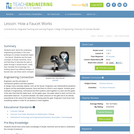
Students learn about the underlying engineering principals in the inner workings of a simple household object -- the faucet. Students use the basic concepts of simple machines, force and fluid flow to describe the path of water through a simple faucet. Lastly, they translate this knowledge into thinking about how different designs of faucets also use these same concepts.

This resource is a video abstract of a research paper created by Research Square on behalf of its authors. It provides a synopsis that's easy to understand, and can be used to introduce the topics it covers to students, researchers, and the general public. The video's transcript is also provided in full, with a portion provided below for preview:
"Antibiotic-resistant bacterial infections have become a public health crisis. Their incidence has increased in the past decades, driven by the acquisition of antibiotic resistance genes (ARGs), but how these ARGs are acquired by bacteria in the environment is not completely known. Human interaction with the environment can spread resistant bacteria, further influencing the antibiotic resistance properties of environmental microbes. In a new study, researchers sought to characterize how human activities influence the environmental “resistome.” They surveyed the microbiome, resistome, and mobilome of planktonic microbial communities in the Han River. The study was extensive, with samples spanning the length of the river over three seasons. Using integrative metagenomic analyses, they found that fecal contamination from humans influenced the resistome in densely populated areas of the river, but interestingly, fecal bacteria weren’t the main factor influencing the ARG increase..."
The rest of the transcript, along with a link to the research itself, is available on the resource itself.
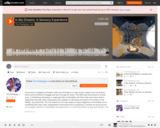
The history of Indigenous Peoples within the US Empire is a tale of both violence and survivance, which can be difficult to engage and work through for many. This OER uses the process of a body scan, a mindfulness technique, to really get folks comfortable with their body and notice what is happening internally while using poetry as a medium to talk about the history of the Diné, or the Navajo, my community. Yet, this violence is not only unique to many Indigenous communities, but is something that many other marginalized communities have something in common as we all survive and navigate systems of exploitation and oppression in a world that denies us love and freedom. This OER ends with a reminder of how beautiful, brilliant and powerful we are and that our stories of resistance need to be shared and celebrated.
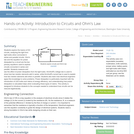
Students explore the basics of DC circuits, analyzing the light from light bulbs when connected in series and parallel circuits. Ohm's law and the equation for power dissipated by a circuit are the two primary equations used to explore circuits connected in series and parallel. Students measure and see the effect of power dissipation from the light bulbs. Kirchhoff's voltage law is used to show how two resistor elements add in series, while Kirchhoff's current law is used to explain how two resistor elements add when in parallel. Students also learn how electrical engineers apply this knowledge to solve problems. Power dissipation is particularly important with the introduction of LED bulbs and claims of energy efficiency, and understanding how power dissipation is calculated helps when evaluating these types of claims. This activity is designed to introduce students to the concepts needed to understand how circuits can be reduced algebraically.

Ohm’s Law is V = IR, where V = voltage, I = current, and R = resistance. Ohm’s Law allows you to determine characteristics of a circuit, such as how much current is flowing through it, if you know the voltage of the battery in the circuit and how much resistance is in the circuit. Created by Sal Khan.
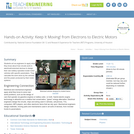
Students act as engineers to apply what they know about how circuits work in electrical/motorized devices to design their own battery-operated model motor vehicles with specific paramaters. They calculate the work done by the vehicles and the power produced by their motor systems.

Survey of Indian civilization from 2500 BC to present-day. Traces major political events as well as economic, social, ecological, and cultural developments. Primary and secondary readings enhance understanding of this unique civilization, and shape and improve understanding in analyzing and interpreting historical data. Examines major thematic debates in Indian history through class discussion.